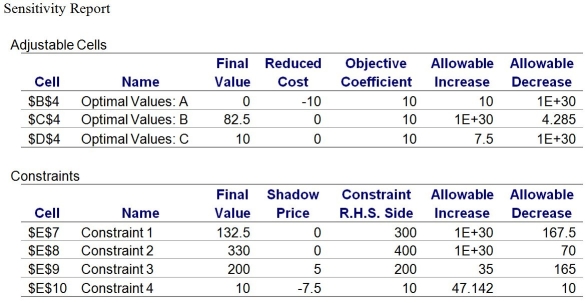Use this information,along with its associated Sensitivity Report,to answer the following questions.
A production manager wants to determine how many units of each product to produce weekly to maximize weekly profits.Production requirements for the products are shown in the following table.
Material 1 costs $7 a pound,material 2 costs $5 a pound,and labor costs $15 per hour.Product A sells for $101 a unit,product B sells for $67 a unit,and product C sells for $97.50 a unit.Each week there are 300 pounds of material 1;400 pounds of material 2;and 200 hours of labor.The output of product A should not be more than one-half of the total number of units produced.Moreover,there is a standing order of 10 units of product C each week.

-What is the optimal objective function value?
Definitions:
Product Life Cycle
The stages a product goes through from its introduction to the market until its decline and eventual withdrawal.
Q11: Simulation usually generates optimal solutions.
Q12: At the break-even point (BEP),total profit is
Q17: Using this data above,develop a network for
Q22: In a quantity discount model,the choice of
Q22: What is the constraint associated with
Q22: A central tendency error occurs whenone positiveperformance
Q23: The ABC Corporation is considering introducing a
Q28: Refer to the table.What is the average
Q38: Project scheduling is the phase that involves
Q43: Maslow's theory suggests that people alwaysmarch neatly